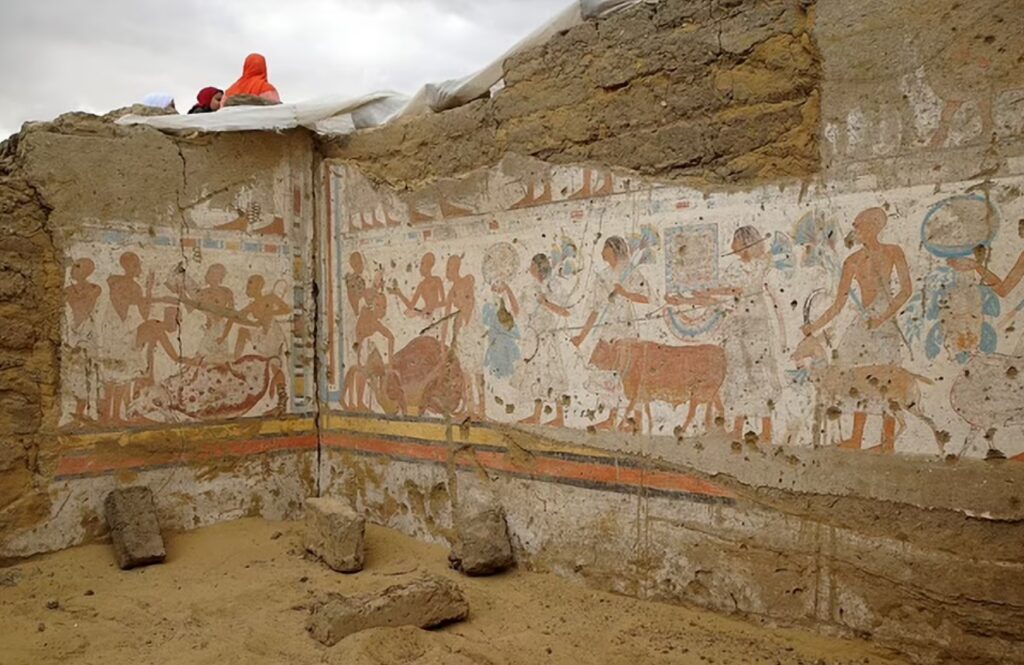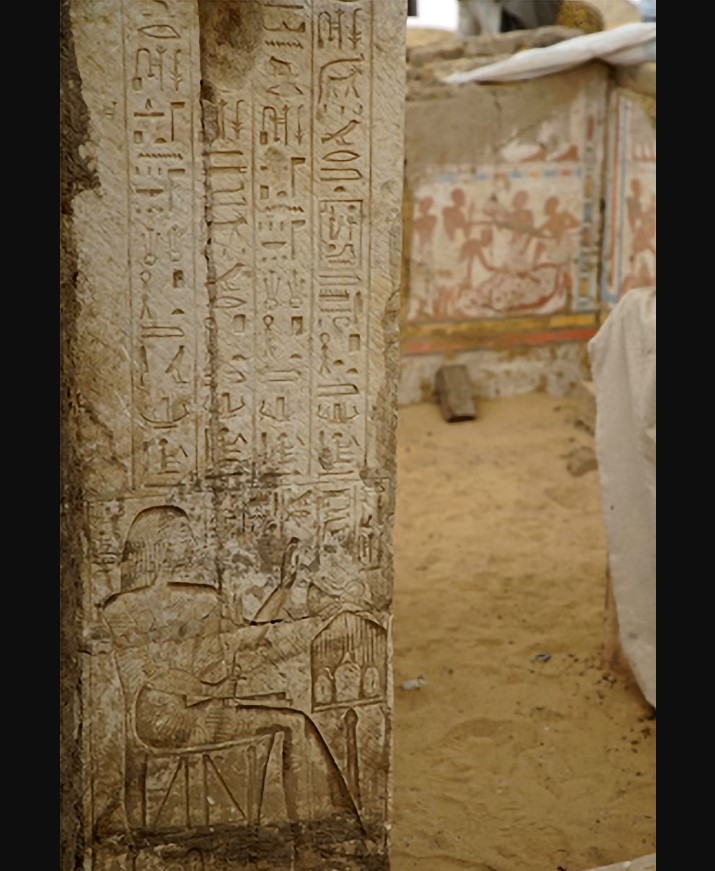Ancient tomb of Pharaoh Ramesses II official discovered at Saqqara
Archaeologists in Cairo have discovered the 3,200-year-old tomb of the chief treasurer of King Ramses II, one of Egypt’s most powerful pharaohs.
The final resting place of Ptah-M-Wia was unearthed in Saqqara, which had been used a necropolis for the Egyptian capital of Memphis for more than 3,000 years.
Saqqara includes other funereal marvels, including the Pyramid of Userkaf and the 4,700-year-old Step Tomb of Djoser, the oldest known pyramid in Egypt.
Archaeologist Ola Al-Ajezi said Ptah-M-Wia’s tomb typifies monumental gravesites in the region, known as tomb-temples, which include an ornate edifice followed by one or more courtyards.
Numerous engraved stone blocks were found buried deep in the sand, she added, as well as columns shaped like Osiris, the Egyptian god of the dead.

‘All these pieces will be studied to be put back in their original places inside the tomb,’ Al-Ajezi said, according to Ahram Online. No human remains have been uncovered in the tomb so far.
Inscriptions in Ptah-M-Wia’s tomb indicate he held several positions under Ramses II, who reigned from 1279–1213 B.C., including chief treasurer and chief supervisor of livestock and offerings at the pharaoh’s temple in Thebes.
Archaeologists also found wall paintings showing people leading cattle and other animals to the slaughter, which may relate to the latter role.
Since minted coins weren’t invented yet, Live Science reported, as head of the treasury he would have overseen payments made in goods, precious metals and animals.
The third pharaoh in Egypt’s 19th Dynasty, Ramses II, also known as Ramses the Great, expanded the borders of the empire as far as Syria and was known for monumental construction projects like enlarging the temples at Luxor and Karnak.

The same excavation team has also turned up tombs of other 19th Dynasty statesmen, a period that lasted from 1292 BC to 1189 BC, including those of Ptah-Mas, mayor of Memphis and Basir, a royal ambassador; and Eurkhi, the supreme commander of the army during the reign of Ramses II and his father, Seti I.
Exploration of Saqqara began in the mid-1800s but major discoveries started in the 1970s and 1980s, under Sayed Tawfik, Egypt’s chief archeologist and chairman of antiquities.
In 2011, an excavation team in the necropolis uncovered almost eight million dog mummies next to a temple devoted to Anubis., the canine-headed god of the underworld
Seven years later, archaeologists discovered the tomb of Wahtye, a high priest, decorated with hieroglyphs and statues dating back more than 4,400 years.
In September 2020, archaeologists at Saqqara discovered a cavern filled with more than 100 wooden coffins, the most ever found in Egypt.

